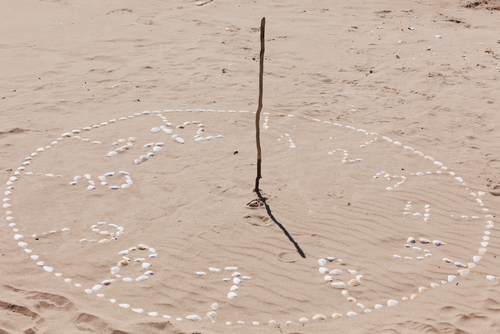Did you know that sundials were used a long time ago?
A sundial uses the Sun's light and a shadow, to work out what time of day it is.

We can use this information to spot patterns in shadows and spot clues about the time of day, just from an object's shadow!
In the pictures below, we are going to say that east is on the left side of the house (as we are looking at it), and west is on the right side of the house.

This picture above shows the Sun rising in the east (in this case, the left of the house). The shadow is long and pointing to the right - the opposite side to the Sun. This is in the morning and the Sun is low, so we could guess around 8-10 am.

The picture above shows the Sun at the highest point in the sky, around midday, 12 pm. The shadow is shorter and directly behind the object.

This final picture shows the Sun setting in the west (in this case, this is the right side of the house). The house's shadow grows longer to the left, in the opposite direction to the Sun. We could guess the time is around 3-5 pm as the Sun is moving closer to the horizon and will set soon.
If we know which direction are east and west, we can see from the Sun what time of day each one happened at - approximately.
In this activity, we will be working out the time of day from shadows and also whether or not the shadow or light source has been used incorrectly.

Let's try one to get you started!
Look at this picture. Robbie says it is 4 pm. If it is 4 pm would the shadow be underneath it?

No! So we know that the light source or the shadow has been drawn wrong! Or that Robbie does not know what time of day this shadow shows us!
In this activity, we are going to help Robbie and Claire to learn about their shadows. Ready?

Let's go!







